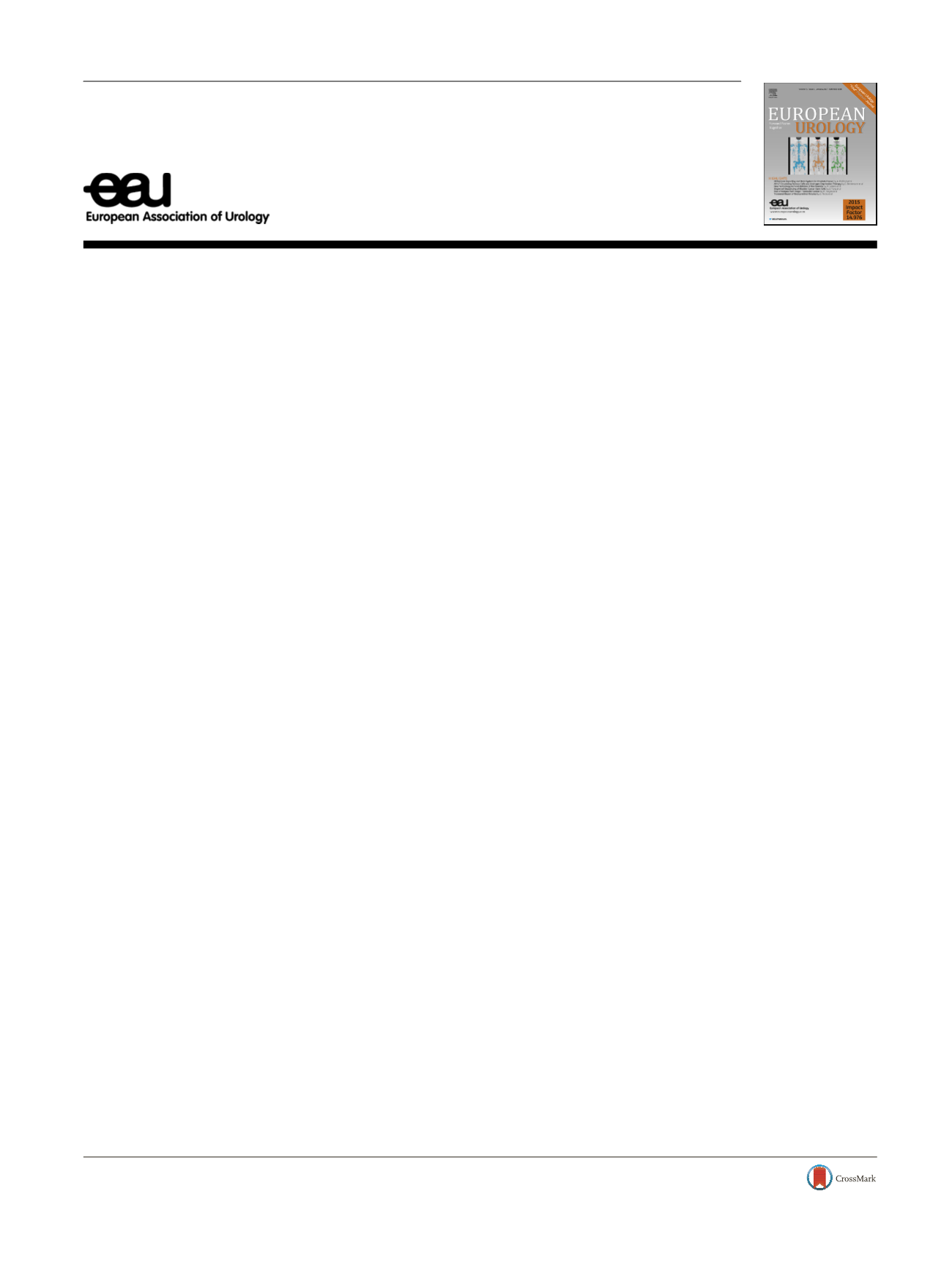

Letter to the Editor
Re: Philipp Mandel, Felix Preisser, Markus Graefen, et al.
High
[1_TD$DIFF]
Chance of
[2_TD$DIFF]
Late
[3_TD$DIFF]
Recovery of
[4_TD$DIFF]
Urinary and
[5_TD$DIFF]
Erectile
[
6
_T
D
$
DI
F
F
]
Function
[7_TD$DIFF]
Beyond 12
[8_TD$DIFF]
Months
[9_TD$DIFF]
After
[10_TD$DIFF]
Radical
[11_TD$DIFF]
Prostatectomy.
Eur Urol 2017;71:848–50
Mandel et al
[1]described a remarkable study on functional
outcomes after radical prostatectomy (RP), with a special
emphasis on urinary incontinence. Although they reported
a novel outcome using a large single cohort, several points
need to be highlighted for a better understanding of the
study.
First, we need to consider that the reported prevalence of
urinary incontinence after RP was widely variable, ranging
from 2.5% to 87%
[2]. Major reasons for this discrepancy
were the absence of a uniform definition of urinary
incontinence and recovery of urinary incontinence, the
use of various diagnostic tools, and diverse follow-up
periods
[3,4].
However, although the study involved a data set
consisting of their own single-institution cohort with a
set follow-up period, the analysis was performed as for
panel data. Kaplan-Meier estimators considering follow-up
loss would have better merit than merely analyzing a cross-
sectional fraction rate. In a data set that includes nationally
representative data or population-based claims data,
analysis of the fractional rate of recovery is sufficient
because of the lower probability of follow-up loss. If the
study did not consider patients lost to follow-up and
excluded them from the whole data set, this is problematic
in two ways. First, the article does not mention any patients
lost to follow-up in the study, including the section on
exclusion criteria. This is an important factor, since it
directly relates to the final conclusion of a positive outcome
for urinary incontinence after RP. Second, the reported
prevalence would be overestimated.
This study represents a novel finding for a single large
cohort and a precise definition of incontinence and
incontinence recovery. However, the limitation of the
cross-sectional recovery rate in the current analysis hinders
a more objective conclusion. Future studies including
conditional survival analysis for incontinence recovery
and considering variables including age, surgeon volume,
surgery types, pre-existing voiding dysfunction, and patient
comorbidities are warranted.
Conflicts of interest:
The authors have nothing to disclose.
Acknowledgments:
This study was supported by the Soonchunhyang
University Research Fund. The sponsor played a role in manuscript
preparation.
References
[1]
Mandel P, Preisser F, Graefen M, et al. High chance of late recovery of urinary and erectile function beyond 12 months after radical prostatectomy. Eur Urol 2017;71:848–50.
[2]
Ficarra V, Novara G, Rosen RC, et al. Systematic review and meta- analysis of studies reporting urinary continence recovery after robot-assisted radical prostatectomy. Eur Urol 2012;62:405–17.
[3]
Barry MJ, Gallagher PM, Skinner JS, F owler Jr FJ. Adverse effects of robotic-assisted laparoscopic versus open retropubic radical pros- tatectomy among a nationwide random sample of Medicare-age men. J Clin Oncol 2012;30:513–8.
[4]
Deliveliotis C, Liakouras C, Delis A, Skolarikos A, Varkarakis J, Protogerou V. Prostate operations: long-term effects on sexual and urinary function and quality of life. Comparison with an age-matched control population. Urol Res 2004;32:283–9.
Jae Heon Kim
a,b,
*
Bora Lee
c
Benjamin I. Chung
a
a
Department of Urology, Stanford University Medical Center, Stanford, CA,
USA
b
Department of Urology, Soonchunhyang University Hospital,
Soonchunhyang University Medical College, Seoul, Korea
c
Department of Biostatistics, Clinical Trial Center, Soonchunhyang
University Bucheon Hospital, Bucheon, Korea
*Corresponding author. Department of Urology, Soonchunhyang
University Seoul Hospital, 59 Daesagwan-ro, Yongsan-gu,
Seoul 140-743, South Korea. Tel. +82 2 7099378; Fax: +82 2 7105190.
E-mail address:
piacekjh@hanmail.net(J.H. Kim).
June 21, 2017
E U R O P E A N U R O L O G Y 7 2 ( 2 0 1 7 ) e 1 7 5ava ilable at
www.sciencedirect.comjournal homepage:
www.eu ropeanurology.comDOI of original article:
http://dx.doi.org/10.1016/j.eururo.2016.09.030.
http://dx.doi.org/10.1016/j.eururo.2017.06.0330302-2838/
#
2017 European Association of Urology. Published by Elsevier B.V. All rights reserved.
















